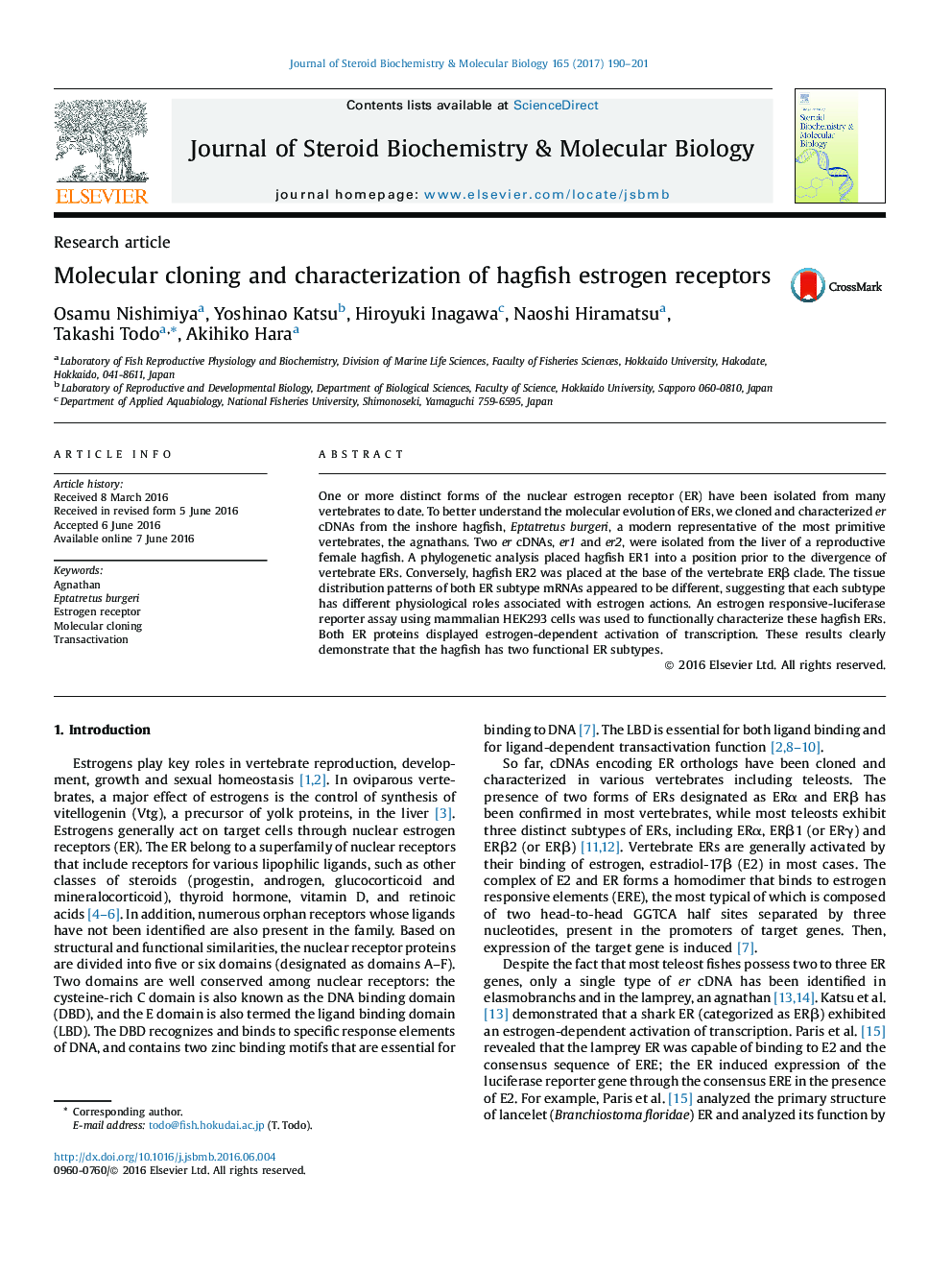| Article ID | Journal | Published Year | Pages | File Type |
|---|---|---|---|---|
| 5513131 | The Journal of Steroid Biochemistry and Molecular Biology | 2017 | 12 Pages |
â¢Liver-derived cDNAs encoding estrogen receptors (er1 and er2) were cloned from inshore hagfish.â¢Phylogenetic analysis placed hagfish ER1 into a position prior to the divergence of vertebrate ERs.â¢Hagfish ER2 is considered to be the ancestor of ERβ.â¢Tissue distribution patterns of both er mRNAs were different.â¢Estrogen responsive-luciferase reporter assay confirmed that both ERs are functional.
One or more distinct forms of the nuclear estrogen receptor (ER) have been isolated from many vertebrates to date. To better understand the molecular evolution of ERs, we cloned and characterized er cDNAs from the inshore hagfish, Eptatretus burgeri, a modern representative of the most primitive vertebrates, the agnathans. Two er cDNAs, er1 and er2, were isolated from the liver of a reproductive female hagfish. A phylogenetic analysis placed hagfish ER1 into a position prior to the divergence of vertebrate ERs. Conversely, hagfish ER2 was placed at the base of the vertebrate ERβ clade. The tissue distribution patterns of both ER subtype mRNAs appeared to be different, suggesting that each subtype has different physiological roles associated with estrogen actions. An estrogen responsive-luciferase reporter assay using mammalian HEK293 cells was used to functionally characterize these hagfish ERs. Both ER proteins displayed estrogen-dependent activation of transcription. These results clearly demonstrate that the hagfish has two functional ER subtypes.
